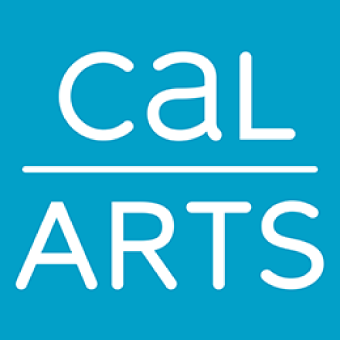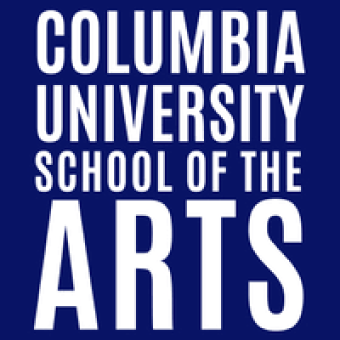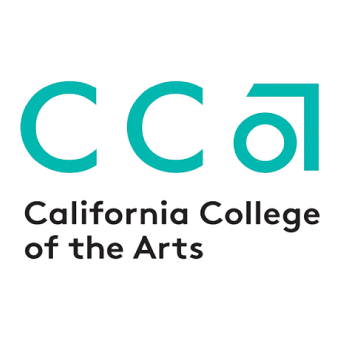Students of photography enjoy education in the unique genres of photography, essential theory, and technical and business practices. The goal of a photography school is to prepare graduates to apply their academic knowledge and training to real-world scenarios. The range of study is vast – students examine fine art, commercial expression, fashion, and photojournalism, just to name a few.
The 25 Best Photography Schools in the U.S. for 2019
Many artists can remember the first time they took, or saw, an exceptional photo that inspired them to pursue photography as a full-time profession rather than just a hobby. With technological advances that have expanded the convenience and popularity of photography, there are millions of people everyday who actively contemplate their potential as a professional photographer. But what does it really take to make the transition from amateur to professional? What skills are needed to be successful (and employable)? Is a traditional degree-granting education necessary to excel in the industry, or is it possible to learn the essential concepts and techniques through self-guided training?
Our School Rankings
The purpose of this guide is to explore the option of earning a traditional degree from a college or university. Today, there are a large number of exceptional schools with photography programs that develop a student’s aesthetic and conceptual skills while providing concentrated coursework in the fundamental principles of photography. These schools will help students master essential photography methods and techniques, including: the basic parts of a camera and how to use them, aperture, ISO, and shutter speed, exposure, focus and depth of field, color balance, lighting, and composition.
The best photography degree programs will also build a student’s overall professional readiness by developing their conceptual knowledge of the fine arts and their creative problem-solving skills. Here, we begin with a list of the nation’s best photography schools, followed by an extensive guide about how to choose a school and what learning outcomes to expect from a photography program.
Why Go to Art School?
There are a wide variety of photography programs to match each student’s career goals and level of dedication; from certificate programs to master’s programs. Certificate programs vary by school but can have anywhere from six to ten classes to full four-year programs. Associate degree programs, which provide a much stronger photography background that certificate courses, usually take two-years to complete. Bachelor’s degree programs in photography last about four-years and provide even more in-depth knowledge and training. Upon graduation from a bachelor’s program, students have a competitive edge and the skills necessary to succeed in the marketplace. Master’s degree programs are typically two-years. Graduates can expect to enter the job market in management positions, such as a senior photographer or art director.
Specialization
Just as there are different types of photography, there are different photography schools that are stronger in some fields that others. For example, if you want to specialize in sports photography, you probably want to choose a school that emphasizes photojournalism. Someone who wishes to become a scientific photographer may want to research schools that also offer classes in science to gain an understanding of the field. A portrait photographer uses different techniques and skills than an industrial photographer, just as photographers who wish to work in advertising should take courses in advertising and marketing. And, scenic or fine art photographers will benefit from schools that offer art classes. All said, no matter what specialty you choose to pursue, many of the same elements you learn for one field or specialty will transfer to another. But, when you are considering schools, choose one that either offers a strong focus in your specialty or a school that gives you the opportunity to try a variety of techniques which can be used in a number of different fields.
Most photography schools will offer basic classes in photography and the technical aspects of taking a photo no matter a student’s specialty. They will also offer classes in composition, lighting, and other practical techniques. They will cover the different types of cameras, handling digital cameras or video cameras, and developing photos. Some programs will cover the used of digital editing and graphic design software, such as Photoshop, Pixlr Editor, Lightroom, Inkscape, GIMP, and Picasa. Photography terminology and history are also classes you will probably take while earning your degree.
Academic and Faculty Reputation
When you choose a school, you are essentially choosing your future. That’s why it is so important to weigh different factors, such as academics, against your decision. According to the American Freshman: National Norms Fall 2014 survey, students at 234 colleges were asked why they chose one school over another. Academic reputation came out on top with 64 percent saying a college with a very good academic reputation was their number one factor in school choice, saying it was even more important than what it cost to attend or location. After all, the name of the college will forever appear on your resume. And, while school reputation is influenced by factors like marketing, the impact it has on school choice is no less real. Check out sites like RateMyProfessors.com and StudentAdvisor.com to see what recent students and alumni think about a particular college campus. But, keep in mind that reviews are sometimes based on emotions, and have far less to do with academic reputation or educational quality than they do with emotions, so read more than one review. And, don’t base your school choice on only a few reviews, but also ask local professionals in the field of photography and see which ones have hired graduates.
School accreditation is also a good indicator that a school meets high academic standards, but, non-accredited photography schools may also have strong programs. However, if you think you may go on to earn a graduate degree, or transfer to another college down the line, attending an accredited institution is the best way to go, as sometimes credits from a non-accredited school do not transfer.
While academic reputation and school accreditation are vitally important, faculty reputation is also a very important factor to take into consideration when choosing a photography school. After all, college is, in a big way, shaped by your professors and school staff. Professors are paramount to a school’s success, but the work they do in class as mentors and advisors is equally important. The sense of connection with professors helps students feel like they belong, and they can advise students on internship and networking opportunities outside of class and after graduation. Because they are experts in the field of photography, they can also advise students on career options post-graduation. And, although a positive student-professor relationship alone does not translate into good grades or academic success, students that establish relationships with their professors typically perform better. What do other students and graduates say about the professors at school’s you are considering? Are the professors up-to-date with the latest technology, and are they professionals in the field who can advise you about the various career options in the field of photography? Do you feel the professors will allow you to experiment with different photography techniques and help you discover your own way?
Location
Location is definitely a determining factor when choosing a photography school. You might ask yourself if you’re willing to move out of state and pay higher out-of-state tuition? If not, you may want to only consider schools in your local area. Keep in mind, however, that some states/schools offer tuition reciprocity programs to defray tuition costs for out-of-state students.
Keep in mind too that larger cities offer greater access to job opportunities, like fine arts photographer, or industrial photographer. However, with size also comes longer commute times and the potential for added distractions. Smaller towns offer a more intimate setting, less traffic and congestion, and a home town feel. And, just like the size of a city is important, the size of a campus should also factor into your school decision. You may be more comfortable in a smaller school with smaller class sizes and a lower teacher-to-student ratio. On the other hand, you may like the social aspects of college life and find a larger university more to your liking. Smaller private institutes also offer much less in terms of activities outside of class, so this is also something to consider when choosing a school too.
There are also a few online and distance learning programs in photography for students who work, live in a remote area, or have other obligations that don’t allow frequent campus visits to attend class. Online classes often allow you to learn at your own pace and can be less expensive, but you probably won’t have the opportunity to form those all-important mentoring relationships with professors or have the chance to form relationships with fellow students. So, ask yourself if student comradery is important to your overall college experience and if you’ll miss the one-on-one attention from professors on campus if you choose to study online instead.
Degree & Major Requirements – What to Expect
Every school will have its own set of requirements for each degree or major. Sometimes degree requirements will be quite different, despite having the same name. That said, there are some general differences that exist among the various certificates and degrees available to students enrolling in a photography school, or enrolling in a university with a photography program embedded in its curriculum.
Photography Certificate
Photography certificates are usually offer by community colleges and technical schools. These programs allow students to learn the basics of photography in a very short time period. Most certificate programs prepare students for entry-level jobs, like photography assistant. What you’ll learn: Fundamentals of photography, foundations of digital photography, history of photography, and foundations of film. You’ll also pick up skills, such as how to operate in a chemical darkroom developing photos, the creative use of photography software, such as Lightroom and Photoshop. You’ll learn how to use image-making techniques and the historic evolution of photography.
Associate Degree in Photography
There are two kinds of associate degrees in photography; an Associate of Arts in Photography, or an Associate of Science in Photographic Technology. They are most commonly offered at community colleges, but can sometimes also be found at art schools and some four-year colleges. The coursework is more technical in nature (then a certificate program) and students learn the different types of photography and the many techniques used in the profession. You’ll take classes in color photography, nature photography, studio photography, and the basics of photojournalism. You’ll gain skills in how to use different lenses. You’ll learn about light and electronic flashes, techniques in setting up photos, and how to use transparency and negative film materials.
Bachelor of Arts in Photography
The Bachelor of Arts in Photography (sometimes called a Bachelor of Fine Arts in Photography) is typically offered at a four-year university or art institute. Students gain more in-depth knowledge of all aspects of photography and how to refine their creative eye. A bachelor’s degree will prepare students for a career as a photographer in the many areas and specialties of photography. Most often, students are also required to take general education courses, such as English, science, art, math, and economics. A few of the classes that students may take at this level include, contemporary photography, photographic lighting techniques, narrative editorial photography, and advanced illustrative photography. You will learn advanced techniques in the various editing software, how to use idea-based imagery in advertising, how to develop story ideas with the use of photography, and how to set up lighting in a studio or on location. You’ll also learn things like exposure, digital inkjet printing, large format digital and film cameras, canning and spotting film, color theory, exhibition, curatorial, pricing, and publishing practices.
A Master’s Degree in Photography
Master’s degree in Photography most commonly falls under the designation of a Master of Fine Arts, with an emphasis in Photography. These programs build on the knowledge and skills learned in a bachelor’s degree program and prepares students to work in fields that require advanced photographic skills and abilities, as well as a high-level of knowledge in all aspects of photography. You will receive training in history, theory, and the practice of photography and photographic technology; sets, lighting, scanning equipment digital imagery, and labs. Graduates may be able to work in marketing, documentary making, and journalism careers.
When pursuing any degree in photography, it is prudent to ask yourself if the school offers a major in photography or in art with a concentration in photography. Will you earn a BFA or a BA? Is a portfolio necessary to be accepted into the program? Does the school have well-maintained facilities with the latest technology and equipment? And, does the program focus on commercial photography? Fine Art Photography? Will I have the chance to combine my photography degree with classes in business? Or, will I learn all aspects of photography which will prepare me for a career in most any field?
Other Factors To Consider
Does the college of your choice offer opportunities to complete an internship? Most programs have opportunities built-in, but it is definitely worth checking out prior to signing up, as an internship will offer you invaluable hands-on experience working side-by-side industry professionals. In smaller towns, these opportunities are limited, but not impossible to find. Larger towns will typically provide more internship opportunities, due to the high concentration of business serving larger populations, but this comes with more competition from other students and professional photographers who are competing for the same opportunities.
And, ask yourself where you want to live. Out-of-state? In-state? Close to home or on the other side of the world. Do you prefer a small campus or a large city? Do you want to take the bus or train to school, or walk? If you plan to attend graduate or professional school, find out what percentage of graduates pursue an advanced degree, and if graduate-level opportunities are available at the college or university you are the most interested in attending.
Keep an Open Mind
Although you may be certain about the direction you want to take your career in photography, keep in mind that about 75 percent of all students change their major at least once prior to graduation. If you start a program with a major in mind, and decide that you have a stronger interest in another area, make sure the credits you’ve earned will transfer to another school program, or consider changing your area of focus with the school you are currently attending.
There are a multitude of areas to pursue within the field of photography:
|
|
| |
|
|
| |
|
|
| |
| |
|
|
| |
| |
|

























